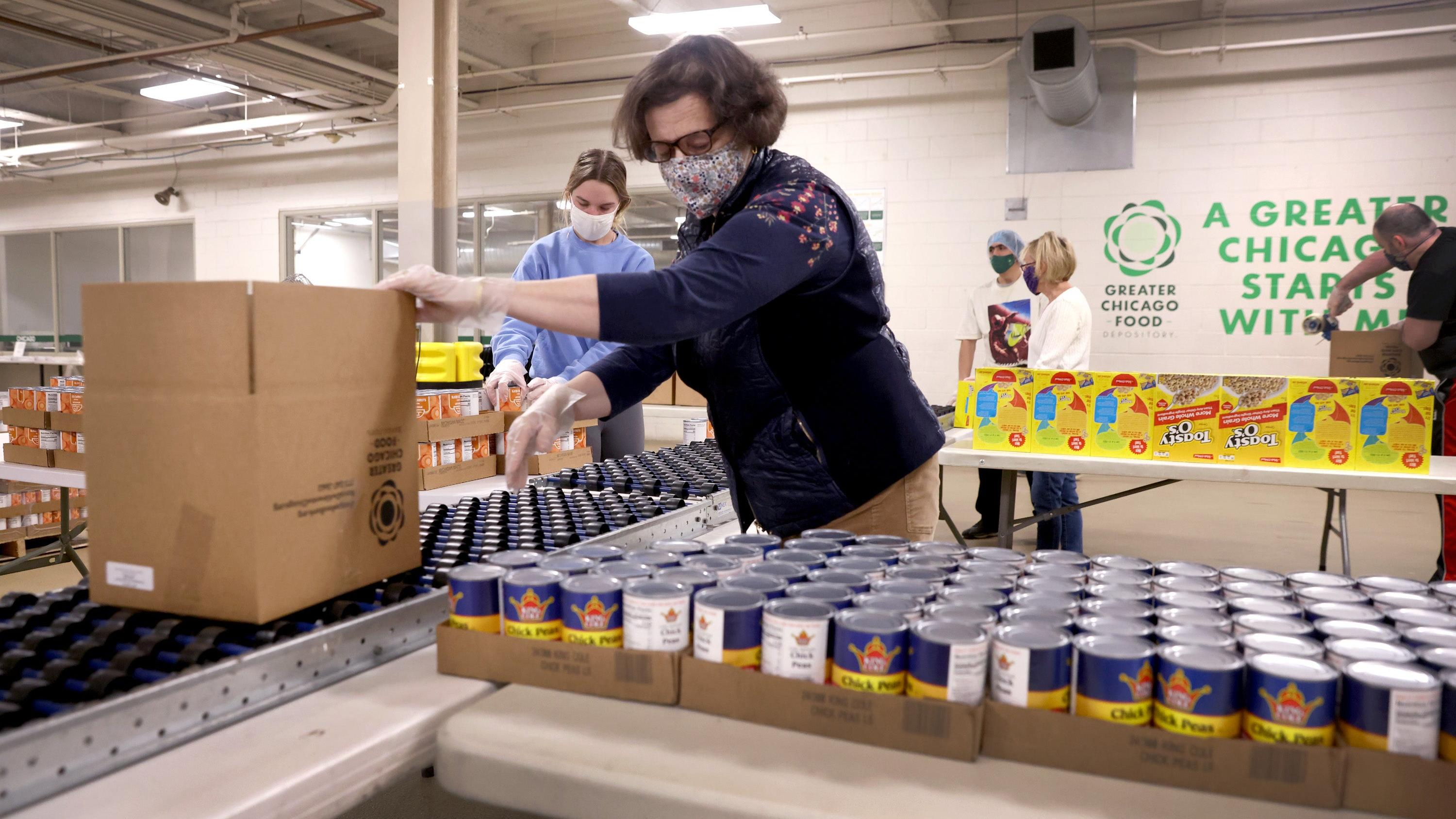What Food Banks Never Need (And What To Give Instead)
Your food donations might not actually be all that useful to those receiving them.
Food banks are always in need. Amid the great resignation, supply chain issues, and the higher-than-ever cost of groceries, more and more people are relying on food assistance; according to Feeding America, there was a 55% increase in demand for these services in 2020. But an increase in need doesn't mean that you should throw just any old food item into the donation pile. Food banks across the country are currently dealing with what The Conversation calls the acorn squash problem.
Maybe you've got a hearty squash crop that you'd like to share with a local pantry, or you noticed a good sale on acorn squash at the grocery store and thought, "Healthy, fresh produce—I bet that would be a welcome donation!" But the folks who receive the bounty might not have the means or knowledge to prepare the squash. Maybe they don't have the time to prepare a meal with that squash. Maybe they don't even like squash. Thus, the donation didn't help anyone, and the person who received it missed out on getting a haul that would actually satisfy their needs.
There's more to consider when donating food than purely offering up what you have on hand or what you personally like to eat and cook. Megan Bennett, the communications manager for the Greater Chicago Food Depository (the Food Depository), provides insight that can be transferable to food banks and pantries across the country.
When are food banks most in need?
"Like most food banks and hunger relief organizations, we receive a significant amount of our support during the holiday season (November and December)," Bennett says. "The support we get during this time is amazing and helps fund our operations well beyond that season. However, if people are interested in getting involved—whether that is through donating funds, food, or their time—we encourage them to also consider doing so in the spring or summer months."
What are the best foods to donate?
It's important to first check and see what kind of food your local pantry accepts. In the case of the Food Depository, only shelf-stable items are accepted from individuals—Bennett lists peanut butter, canned or dried beans, canned soups or chili, canned vegetables, and canned fish as the most needed items.
The Food Depository also hosts virtual food drives that allow donors to purchase items for families that they wouldn't typically be able to donate, like fresh produce, dairy, and other perishables.
"The Food Depository also accepts donations from food companies and/or businesses that, for a variety of reasons, may be trying to release some of their inventory without it going to waste," Bennett says. "Most-needed items include fruits and vegetables, protein, grains, dairy and non-dairy alternatives, and cooking staples."
In general, keep in mind what ingredients are simple and quick to cook, or ready to eat, to accommodate all levels of cooking ability.
What are the worst foods to donate?
"The Food Depository's mission is centered around providing nutritious food to our neighbors," Bennett says. "Candy, soda, energy drinks and other items high in sugar, sodium, or saturated fats are also not accepted."
Diana Cuy Castellanos and John C. Jones break it down to eight questions in The Conversation:
If someone visiting a food pantry wouldn't say yes to all eight of these questions, the food may go to waste.
- Is this edible?
- Is it something I want to eat?
- Would I know how to cook this?
- Do I have the tools required?
- Can I store it safely until I'm ready?
- Do I have the time to prepare something with this ingredient?
- Do I have time to consume it?
- Will I be able to get all this food home?
Think back to that acorn squash—if you can't easily cook it or eat it, then you can't expect someone with less resources to do so.
Other ways to support the food insecure community
Time and money are two invaluable resources to food banks, so it's always an option to check with your local organization to find out how to best offer both. But you can also put in work to stop the cause, instead of just treating the symptom.
"Getting involved in advocacy is another great way to help," Bennett says. "Advocates push for critical anti-hunger policies and programs at the local, state, and federal level. These programs, like the Supplemental Nutrition Assistance Program (SNAP), Women Infant and Children Program (WIC), and others are key to lifting families out of poverty and food insecurity."
